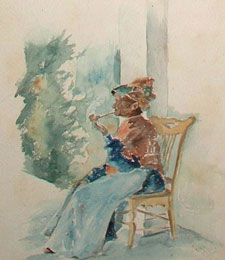Nancy Mcgruder
(ca. 1810 – 1906)
 The life of Nancy Mcgruder is an intriguing one. The first half of her approximately ninety-six years on earth is obscured by her condition of enslavement, but at the age of fifty-five she ran away from Boone County, returning sporadically until 1878, when her health began to fail and she could no longer work for a living. Coming back for good, she lived for another twenty-eight years, and her name appears in more family letters than many family members.
The life of Nancy Mcgruder is an intriguing one. The first half of her approximately ninety-six years on earth is obscured by her condition of enslavement, but at the age of fifty-five she ran away from Boone County, returning sporadically until 1878, when her health began to fail and she could no longer work for a living. Coming back for good, she lived for another twenty-eight years, and her name appears in more family letters than many family members.
The first mention of Nancy is in 1825 when James Dinsmore purchased her from John Minor. 1 She then shows up again two years later when Dr. John Bell, a cousin of James Dinsmore’s, visited Concordia Plantation across the Mississippi River from Natchez, Mississippi to treat Nancy and another slave, Jilson Hawkins. She would have been about seventeen years old at that time and probably working in the cotton fields.
In 1829, Nancy moved with James to the Bayou Black plantation that he had recently purchased with John Minor. She worked primarily in the main house and was often mentioned in plantation documents with Vincent, who may have been recognized as her husband. Both Vincent and Nancy worked extra on Sundays to earn money to purchase material for clothing and tobacco which Nancy enjoyed smoking. She also sold eggs to Martha Macomb Dinsmore and worked in the sugar mill during the harvest. Many years later, after the Civil War, Nancy was listed in the Census as being a widow.
When James bought his farm in Boone County, Kentucky in 1838, he had to decide what to do with his forty or so enslaved African Americans in Louisiana. By 1842, he had chosen to bring a woman named Sally up to Kentucky with her children. He also decided to bring an elderly man, Coah, the husband of an enslaved woman, Winney, who was going up to work for the Silas Dinsmoor family in Belleview Bottoms, just a mile away from James’ farm. Another enslaved man, Jim, went to Kentucky also but he does not appear to have been related to anyone. Although James did not intend to bring Nancy to Kentucky—he planned instead to make her “a gift” to Mrs. Winder, the future mistress of Bayou Black. Nancy's husband, Vincent, was also working on the plantation but he was not enslaved by Dinsmore. When James discovered that they were going to put Nancy in the fields to work, he asked her if she would rather remain in Louisiana or go with the family to Kentucky. She opted for Kentucky even though it meant leaving her husband behind. The other enslaved people were hired out to neighbors and, later, to William J. Minor, who eventually owned all of the Bayou Black plantation.
When they arrived in Boone County in 1842, Nancy, Sally, and Coah joined the Middle Creek Baptist Church. According to a song that was sung by Nancy and recorded, in dialect, by Julia Dinsmore, religion was an important part of Nancy’s life: “Green trees a’bustin, pore sinners stand atremblin’, de trumpet sounds widin my soul, and I aint got long to stay here. An’ amore away, an’ amore away, an’ amore away home to Jesus.” It may have been during this time period in Kentucky that Nancy learned to read and write. Julia noted years later that when Nancy became agitated she would recite Bible verses. We also know that she could read and write. She may have been taught to read by Isabella or Julia Dinsmore or possibly by someone else on the farm.
Like other enslaved women owned by the Dinsmore family, Nancy was given the title “Aunt.” This was probably done to give her the impression that the white family thought of her as more than just a slave. Since Nancy preferred to sign her letters “Nancy Mcgruder” without the Aunt, she evidently knew exactly where she stood with the family. On the other hand, she was closer to the Dinsmore family than other enslaved African Americans because she worked in the house and interacted more with the family members. This could be a blessing or a curse, depending on Nancy’s nature and the natures of the family. However, it seems that Nancy got along fairly well with the Dinsmore’s—when they traveled they occasionally brought souvenirs back for her and they mentioned her often in letters. Soon after moving to Boone County, Nancy was married to an enslaved man named Noah, who lived on a neighboring farm. As with Coah and Winny, and many Kentucky slaves, they only saw each other from Saturday afternoon to Sunday evening. Unfortunately, Noah died in 1851.2
In September of 1865, Nancy was dismissed from the Middle Creek Baptist Church for “leaving the state in a disorderly manner and [being] gone to parts unknown to us.” She had run away. Perhaps as a result of her literacy, but also as a result of the information network among African Americans, she realized that slaves had been freed just about everywhere else except Kentucky. So she left the farm on foot. James Dinsmore probably did not send after her to bring her back because he realized that slavery was doomed. Although no one knows for sure where Nancy went in 1865, letters from her in 1877 were postmarked Oxford, Ohio, so that may have been her initial destination. Oxford was located along the Underground Railroad and had a reputation for treating African Americans with more respect than many places. There were also other African Americans from Boone County who had relocated to Hamilton, Ohio, and nearby Oxford.
She returned to the farm in Boone County occasionally and would then leave again, frustrating Julia Dinsmore who always had trouble finding women to do the cooking and cleaning for her. By 1878, though, Nancy’s back was troubling her and she had no one else to take care of her. She had written Julia that “where eer I go I try to live so I may have some friends if I get down and cannot help myself they will care for me when sick.” 3 Now she found herself alone. Julia sent Nancy money to return to Boone County to live. There was an empty cabin on the property and initially Nancy lived there. One friend who visited Julia about 1890 remembered going to visit Nancy’s cabin and that she appeared to be very old and liked to tell people that she had held every child who had been born on the place. 4
In the early 1890s, Nancy’s cabin burned down with everything in it—it was too far away for anyone to save—and she moved into the kitchen cabin, where she remained the rest of her life. Julia and her various servants helped to nurse Nancy as she became increasingly feeble. Julia watched the horrors of aging take place and empathized with Nancy in a way that was unique for her, since she generally felt very distanced, intellectually, from African Americans. The close relationship that developed between Nancy and the Dinsmore descendants was reflected in their constant “howdies” to Aunt and questions about her health as the years passed. On July 29, 1906 Nancy died after a long illness which had kept her bedridden. In a letter to her niece, Sally, Julia wrote:
“She looked surprisingly natural considering how long she lay dying.... The cap was a success – it was put on over a head handkerchief of new white lawn and being too full around the face I ran a thread around under the frills and drew the fullness around the forehead. We put on what she wished and had picked out. Georgy and I helped but Fanny was the head one and Aunt looked so nice that she would have been pleased to see the result.” 5
Julia sent to Rising Sun for a casket and Nancy was buried in the Dinsmore family graveyard. An impressive number of local African Americans attended the short ceremony where a group of young girls sang “Some Sweet Day” and “They Never Say Goodbye in Heaven.” Because of the hot weather and the rural practice of not embalming the dead, Nancy was buried soon after her death. On the evening of her funeral, Julia became sentimental. “The last link is broken that bound me to the southern past of my childhood but a hundred years of this world is enough and to spare. ‘And now peace laps her round.’” 6 Nancy was approximately ninety-six when she died.
1 John Minor to James Dinsmore, 17 May 1825, file 1994.
2 Middle Creek Baptist Church, microfilm, 24 February 1844 and October 1851.
3 Nancy Mcgruder to Julia Dinsmore, 6 September 1877.
4 Enid Yandell, “A Corner in Kentucky,” Filson Historical Society, MSS.A Y21b Folder 73.
5 Julia Dinsmore to Sally F. Cutcheon, 5 August, 1906.
6 Julia Dinsmore Journal, 30 July 1906
